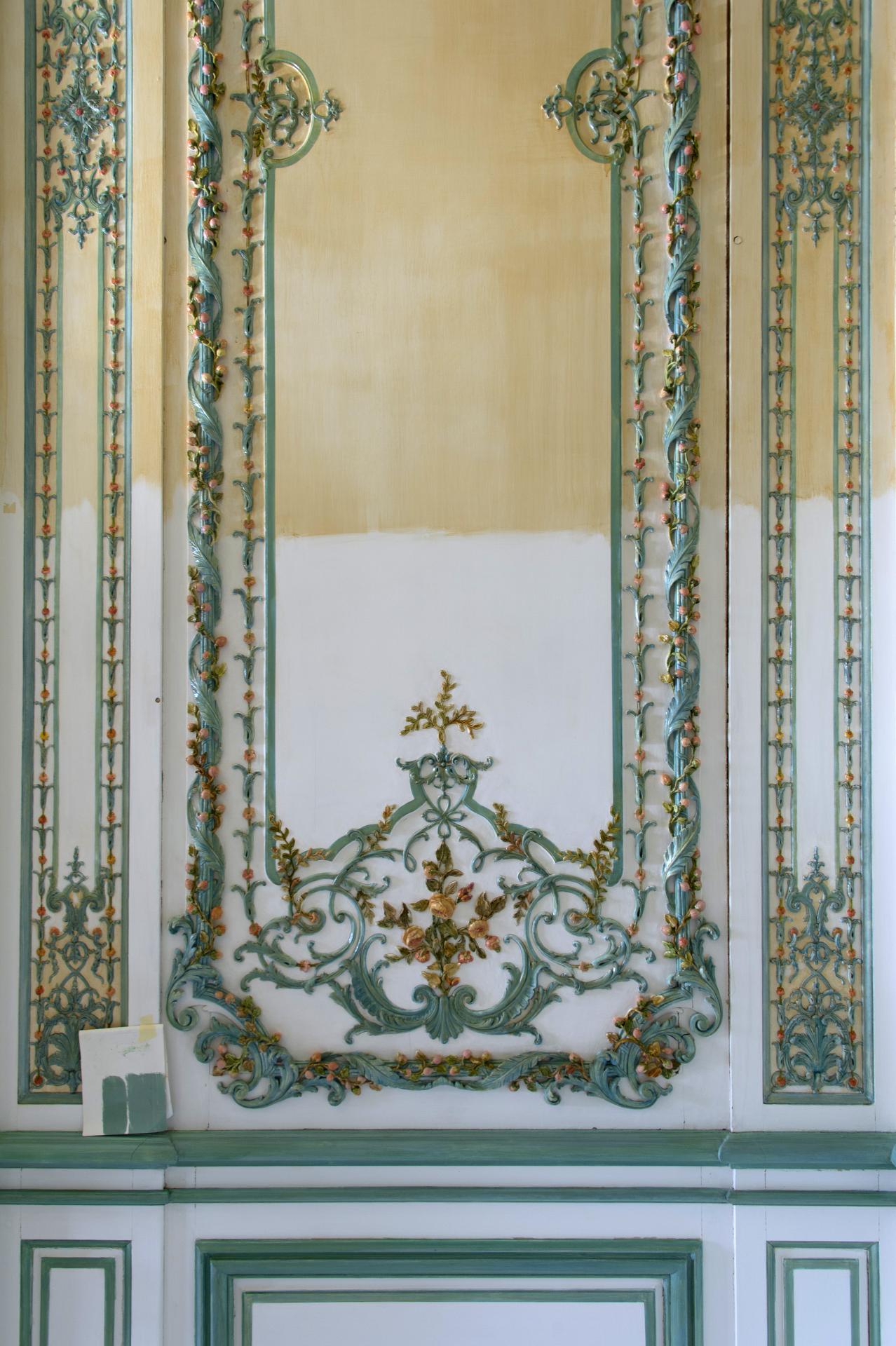In June 2021, restoration work started on the Dauphine’s Private Chamber, formerly the residence of Maria Josepha of Saxony, wife of Louis of France and mother of Louis XVI, to restore it to its former colours. To this end, painter and decorator Gilles Dupuis has embarked on this project as a skills-based patronage operation. He has been working at the Palace alongside his father since 1957, set up his own workshop, and now works with his children.
PATRONAGE TO RESTORE THE DAUPHINE’S CHAMBER

The Dauphine’s Chamber undergoing restoration
© EPV / Didier Saulnier
A strong attachment to the palace of Versailles
Why did you want to take part in a skills-based patronage operation for the Palace of Versailles?
Our family workshop has been working for the Palace for 90 years: for my part, I started out very young, with my father. We have worked on many building projects, such as the restoration of the Poets’ Room, Marie-Antoinette’s Apartments and the Petit and Grand Trianon. It was important to be able to support the Palace in our own way. I recently found out that I could provide skills-based patronage, which I saw as a way of paying tribute to my father and the work we have performed over the years at the Palace of Versailles.
How would you describe the ties between the Palace of Versailles and the Atelier Gilles Dupuis?
My father, Raymond Dupuis, started working at the Palace of Versailles in 1929 on a major restoration project for the Queen’s Hamlet funded by a donation from John Rockefeller. I always wanted to work with my father. So I followed him around on his building sites and projects, for example during the restoration of the Grand Trianon, the Royal Opera House and all sorts of decorative painting projects. So I learned the trade very young and very quickly by his side. Concurrently, I also studied fine arts at the École des Beaux-Arts. So we could say there is quite some background to my love for the Palace of Versailles.

Process to remove yellowed varnish from the 1980s
© EPV / Didier Saulnier
the restoration of the dauphine's chamber
What are the main steps in this restoration project?
It is an operation to refurbish all the very intricate wood panelling. We have to remove the varnish from the 1980s which has yellowed. Current policy is to restore the room to its original state, when it was inhabited in the 18th century by Maria Josepha of Saxony. At the time, the Chamber resembled Meissen porcelain – white with coloured embellishments. So we are aiming to achieve this aspect then apply a more stable, clear varnish. The architect has asked for some pieces sculpted in wood to be added to complete certain parts of the décor. We will then be able to add touches of colour and small improvements requested by chief architect Frédéric Didier, and we will add some highlights for the ornaments to look truly vibrant. For the polychromatic touches, we will be working from an original panel which had been stored in the Palace depository. Thanks to this research, we were able to get very accurate references for the colours used at the time of Maria Josepha of Saxony.
Is the work on the Dauphine’s Chamber different to previous projects you have worked on?
We have worked in many different rooms of the Palace and in the Estate but the techniques remain the same. As artists and painters, we have to be versatile, doing everything from landscapes and portraits to decorative painting. We always use special artists’ brushes and colours for our work.

Wood panelling before (above) and after (below) removing the varnish
© EPV / Didier Saulnier
The Dauphine’s Private Chamber is restored thanks to the skills-based patronage of Atelier Gilles Dupuis.



